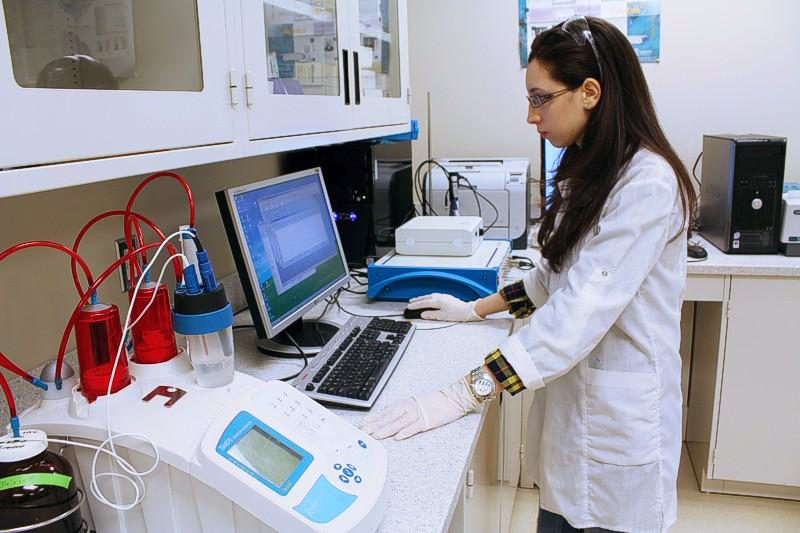Jan 19 2021
At the Institut national de la recherche scientifique (INRS), a research group under Professor Patrick Drogui has created a new process for the electrolytic treatment of wastewater that breaks down microplastics at the source.
 Electro-analytical system used to identify appropriate electrodes for anodic oxidation processes. Image Credit: Institut national de la recherche scientifique.
Electro-analytical system used to identify appropriate electrodes for anodic oxidation processes. Image Credit: Institut national de la recherche scientifique.
The study results were published in the Environmental Pollution journal.
Wastewater has the potential to carry high concentrations of microplastics into the ecosystem. Such small particles measuring below 5 mm can come from people’s clothes, generally as microfibers.
Professor Patrick Drogui, who headed the study, highlights that there are no standard degradation techniques at present to manage this pollutant at the time of wastewater treatment.
Already, few methods are being used, but these methods usually require physical separation as a tool to filter pollutants. Such technologies do not break them down, which involves more work to handle the separated particles.
Thus, the researchers chose to break the particles down through electrolytic oxidation. This process does not require the use of chemicals.
Using electrodes, we generate hydroxyl radicals (OH) to attack microplastics. This process is environmentally friendly because it breaks them down into CO2 and water molecules, which are non-toxic to the ecosystem.
Patrick Drogui, Professor and Scientific Director, Laboratory of Environmental Electrotechnologies and Oxidative Processes, INRS
The electrodes that have been utilized in this process are very costly compared to iron or steel electrodes, which degrade as time passes yet can be reused for many years.
An Effective Treatment
Professor Drogui predicts the use of this technology at the exit of commercial laundries, a possible source of the release of microplastics into the surroundings.
When this commercial laundry water arrives at the wastewater treatment plant, it is mixed with large quantities of water, the pollutants are diluted and therefore more difficult to degrade. Conversely, by acting at the source, i.e., at the laundry, the concentration of microplastics is higher (per litre of water), thus more accessible for electrolytic degradation.
Patrick Drogui, Professor and Scientific Director, Laboratory of Environmental Electrotechnologies and Oxidative Processes, INRS
Drogui is also a specialist in electrotechnology and water treatment.
The lab tests that were carried out on water artificially polluted with polystyrene exhibited a degradation efficiency of 89%. The researchers intend to move on to experiments on real water.
Real water contains other materials that can affect the degradation process, such as carbonates and phosphates, which can trap radicals and reduce the performance of the oxidation process.
Patrick Drogui, Professor and Scientific Director, Laboratory of Environmental Electrotechnologies and Oxidative Processes, INRS
If the technology is found to be efficacious on real commercial laundry water, the researchers of this study plan to carry out another study to find out the cost of treatment and the adaptation of the technology for the treatment of huge amounts of wastewater. The technology could be executed in laundry facilities in a few years.
The study received funding from the Fonds de recherche du Québec - Nature et technologies (FRQNT), the CREATE-TEDGIEER program, the Natural Sciences and Engineering Research Council of Canada (NSERC), and the Canadian Francophonie Scholarship Program (CFSP).
Journal Reference:
Kiendrebeogo, M., et al. (2021) Treatment of microplastics in water by anodic oxidation: A case study for polystyrene. Environmental Pollution. doi.org/10.1016/j.envpol.2020.116168.